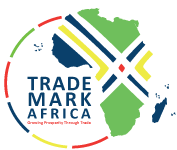ARUSHA, Tanzania, 28 February 2015 / PRN Africa / — Ministers from the East African Community (EAC) have signed a Cooperation Agreement on Trade Facilitation, Sanitary and Phytosanitary (SPS) Measures, and Technical Barriers to Trade (TBT) with the U.S. Trade Representative, Ambassador Michael Froman on 26 February, 2015 in Washington, D.C. The Cooperation Agreement will increase trade-related capacity in the East African region, as well as deepen the economic ties between the EAC and the U.S. This partnership will build on to the EAC's work on customs reforms, which have already resulted in substantial reductions in the time and costs of moving goods across borders within the EAC Partner States. During the signing ceremony Ambassador Froman announced that the United States will look into expanding ‘Trade Africa' beyond the EAC boarders to the rest of Africa. ‘Trade Africa' is U.S. President Barack Obama's initiative to support greater U.S.-Africa trade and investment. “Today's Agreement is an important milestone for strengthening what has already proven itself to be a promising and impactful partnership,” said Ambassador Froman. “This Agreement will help us lift the burdens that trade barriers impose, unlocking opportunities for both our continents,” he said. While a majority of the region's people are involved in agricultural production or processing, the export potential of these products are currently limited. With this new Agreement in place, the EAC can now meet international standards by bringing in U.S. technological expertise to fully implement the World Trade Organization (WTO) Trade Facilitation Agreement on Sanitary and...
EAC-US TRADE INVESTMENTS STRENGTHENED DURING MINISTERIAL MEETING IN WASHINGTON, D.C.
Posted on: March 3, 2015
Posted on: March 3, 2015















